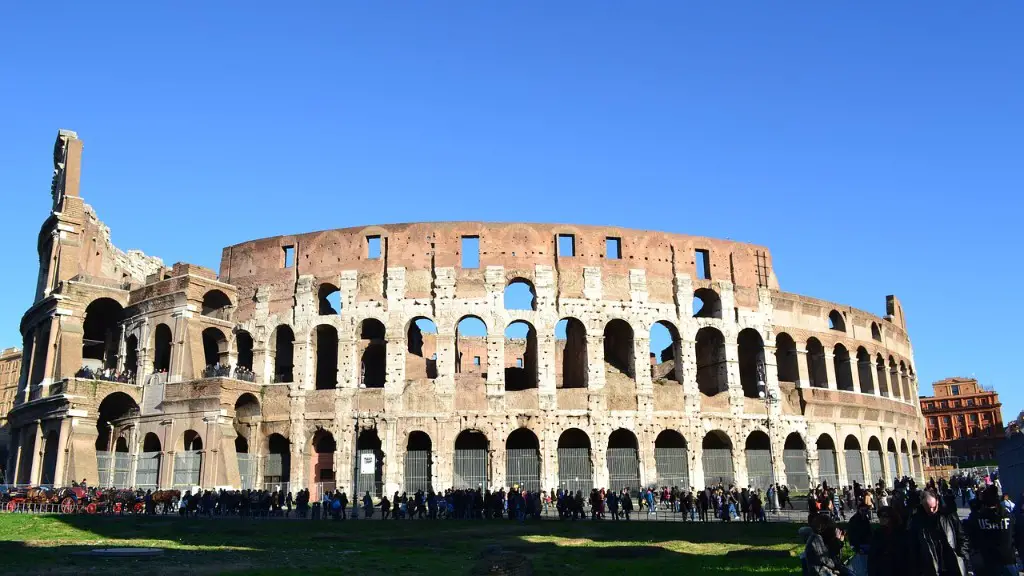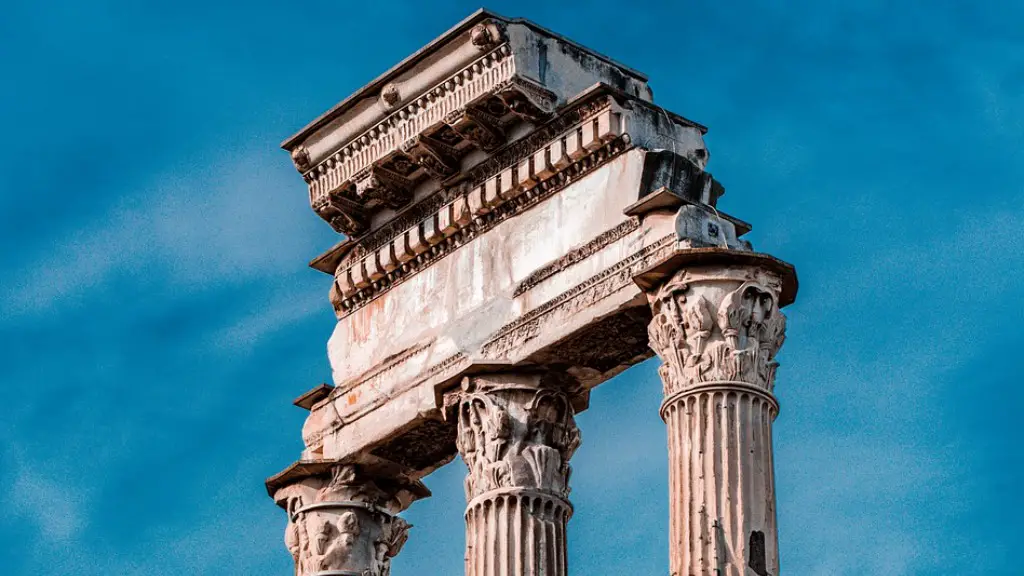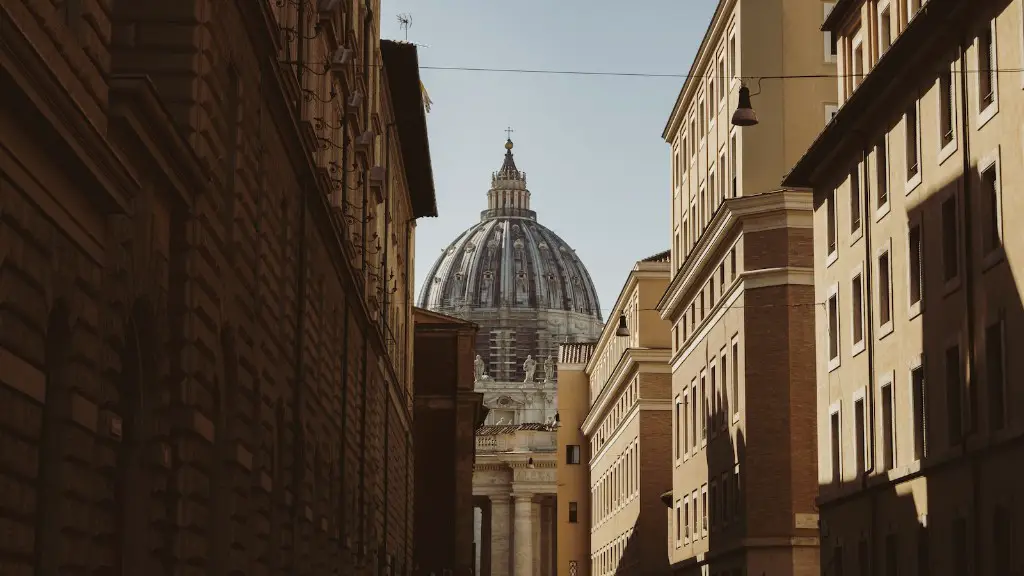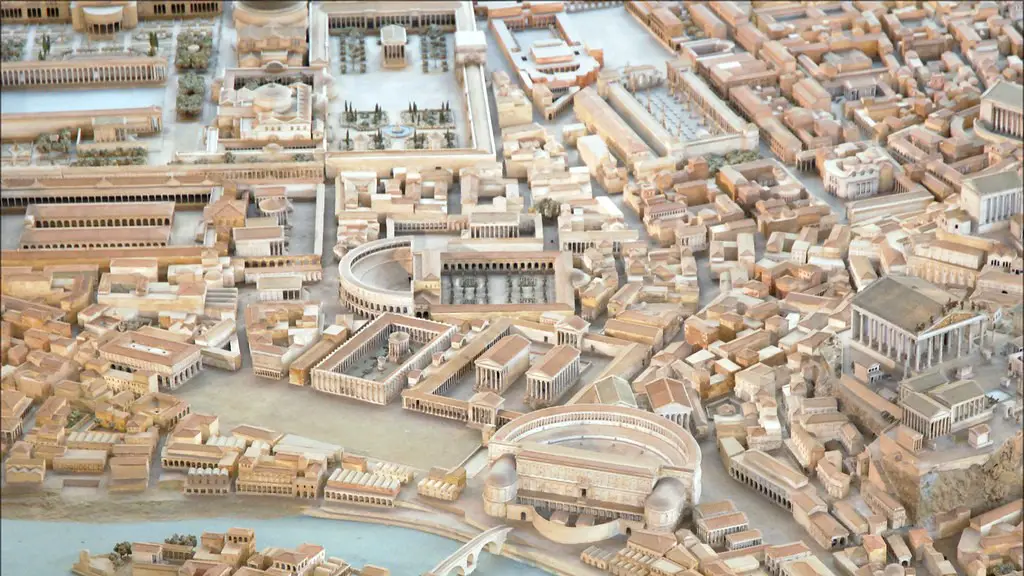Ancient Roman Economy Overview
The economy of Ancient Rome was a complex system that was based on farming, trade, manufacturing and mining. The Roman economy was the result of the interaction among different social classes, with the Senate and the emperors ultimately controlling the financial resources. The system of taxation was also very much involved in the economic system. Ancient Rome was able to have such a complex economy due to the fact that it was at the center of the Mediterranean trade network.
The vast majority of the population in Ancient Rome were farmers. It is estimated that close to 50% of the population were involved in agriculture, working on small family-run farms. The majority of the population were comprised of slaves, who were given the responsibility of providing labor in the fields and performing other manual labor. Farmers had to pay taxes which were then used to fund public services, such as the construction of public buildings and roads.
Trade was also an important part of the Ancient Roman economy. They traded with other Mediterranean countries and beyond, exchanging goods such as grain, wine, oil, and various other commodities. The Romans also used the sea as a way of transporting goods, as well as their very efficient network of roads. This network of roads was built to ensure that goods could move quickly, while also providing a safe passage for military troop movements.
Manufacturing was another area in which the Ancient Roman economy was prosperous. Throughout different parts of the Roman Empire, a variety of different industries flourished. Pottery and textiles were some of the most important industries. The Romans also manufactured weaponry, which was sold to other countries as an important source of revenue.
Rome had a very large mining industry and was responsible for exploiting the mineral resources of their territories. This industry provided the people of Rome with the resources necessary to build their cities. Different kinds of minerals were mined and used for different purposes, such as to provide building materials for the construction of public buildings as well as for other industrial uses.
Finally, the Ancient Roman economy was based on currency. The standard form of currency was the Denarius, although other forms of coins were also used. The Denarius was the main form of money used during the Roman Republic and was used to purchase goods and services throughout the empire. The coins were minted by different cities and bore their image, with the Roman Emperor being depicted on the coins of the later Roman Empire.
Taxes In Ancient Rome
Taxes were an integral part of the Ancient Roman economy. The government collected various taxes in different forms. The most important source of income for the government came from the taxes on agricultural production. This tax was paid by all farmers, regardless of their wealth or social class.
Taxes were also imposed on goods that were traded. This enabled the Roman government to regulate the prices of goods and services. Finally, the Roman government also imposed taxes on people who had more significant wealth, such as those who owned land or had businesses. This taxation was aimed at redistributing wealth and ensuring that everybody participated in the economy.
Trade Policies of Ancient Rome
Trade formed an essential part of the Ancient Roman economy. The Roman Empire was a major trading power, exchanging goods such as grain, olive oil, wine, weapons, and other commodities with other countries throughout the Mediterranean region and beyond. The trade of goods was an important source of income for the Roman Empire as well as for its traders. The Romans imposed tariffs on foreign goods as a way of protecting their own industries and for other political reasons.
The Romans also imposed restrictions on the import of certain goods that were deemed to be undesirable, such as luxury goods. The government also imposed restrictions on the movement of goods across their borders. All goods had to be approved by the Roman government before they were allowed to be imported or exported.
To facilitate the transfer of goods, the Roman Empire had an extensive network of roads which enabled goods to move quickly and safely throughout the empire. The Romans also used the sea as a way of transporting goods, with large numbers of ships moving goods across the Mediterranean.
Money in Ancient Rome
Money in Ancient Rome was very important in the functioning of the economy. Coins were used as the primary form of currency. These coins were made mainly from bronze and gold and depicted the portrait of the Roman Emperor. They were produced by various cities throughout the empire and used to purchase goods and services in different markets.
The primary unit of value in Ancient Rome was the Denarius. This was the standard coin used for transactions and was equivalent to approximately four sesterces. Other coins were also used, such as the As and Sestertius, which were worth one-sixteenth and one-fourth of a Denarius respectively.
Inflation in Ancient Rome
Throughout its existence, Ancient Rome experienced periods of inflation which had a significant effect on the economy. This was caused by the large amounts of government spending, combined with the sudden influx of gold from conquered territories. The government printed more money to pay for public services and construction projects, which led to an increase in the money supply, resulting in an increase in prices.
The debasement of the currency also had an effect on inflation. The Romans would debase or reduce the value of coins as a way of raising revenue, which would in turn lead to an increase in prices. This made it difficult for people to maintain their standard of living and caused a decline in the real value of money.
Effects of Inflation
The effects of inflation were felt throughout the Roman Empire. As prices increased, the purchasing power of the people decreased, leading to a decline in the standard of living. People were unable to afford basic necessities, such as food, clothing, and shelter. This led to social unrest and an increase in crime, which were two of the major factors that led to the decline of the Roman Empire.
The problem of inflation was addressed by the Roman government by introducing reforms, such as taxing the wealthy and introducing the Lex Papia in 98 AD which imposed severe penalties for those who hoarded money and enforced price controls. However, these reforms proved to be largely ineffective in combating inflation.
Conclusion
The Ancient Roman economy was a complex system that was based on farming, trade, manufacturing, and mining. The Roman economy was highly structured and enabled the empire to grow and prosper. Trade was an important part of the economy, with goods being exchanged across the Mediterranean and beyond. Manufacturing and mining were also key sectors of the economy. Taxes were an essential part of the system, with certain groups, such as the wealthy and farmers, expected to pay taxes to fund public services. Money was also important, with coins being used as the main form of exchange. Unfortunately, the Roman economy was not immune to inflation and its effects were felt throughout the empire.




